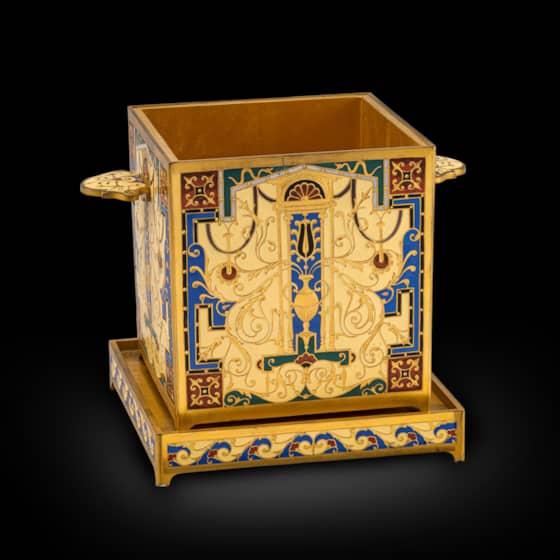Ferdinand Barbedienne
( 1810 - 1892 )
The following history of Ferdinand Barbedienne is provided as a reference for Ansonia Clock Company's swing-arm clocks, many of which had the upper and lower balls on the swing-arm coloured in a deep brown finish Ansonia called "Barbedienne". Here is where they got the inspiration for that name, from the coloration for which its creator was so well known in the sculpture world: Ferdinand Barbedienne (January 10, 1810 –March 21, 1892) was a French metalworker and manufacturer, who was well known as a bronze founder. The son of a small farmer from Calvados, he started his career as a dealer in wallpaper in Paris. The F. Barbedienne foundry was started in Paris in 1838 by Ferdinand Barbedienne and Achille Collas, who was the inventor of a machine that would mechanically reduce statues. They at first produced bronze reductions of antique sculptures of Greek and Roman origin. Their first contract to produce bronzes modelled by a living artist was made in 1843 when they arranged to produce the works of Francois Rude. They barely survived the revolution and financial collapse of 1848 which caused many artists and foundries to declare bankruptcy. Barbedienne actively pursued contracts with the many sculptors of Paris contracting with David D'Angers, Jean-Baptiste Clesinger, and even producing some casts for Antoine Louis Barye as well as others. Achille Collas died in 1859 leaving Ferdinand Barbedienne as the sole owner of the foundry which by that time had grown to employ over 300 workers at their workshop located at 63 Rue de Lancry in Paris. Ferdinand Barbedienne was made the President of the Reunion of Bronze Makers in 1865 a post he held until 1885. The outbreak of the Franco-Prussian war in 1870 and the shortage of raw metals caused him to have to stop making sculptures, but he did receive a contract from the French government for the production of cannons which kept his foundry open. After the war he resumed his casting of sculptures and put even more effort into signing contracts with various sculptors. Barbedienne Purchased 125 casting models from the late Antoine Louis Barye's sale in 1876. He set about casting and selling editions of these sculptures which was very successful, devoting an entire catalogue to these works. Ferdinand Barbedienne died on March 21, 1891 and was mourned by many in the world of sculpture. It was said that he strove to the highest quality in his castings Albert Susse said of him that he was the "pride of the nation" and that he "carried the splendour of our industry so loftily to all international competitions". The running of the foundry was taken over by Gustave Leblanc, a nephew, and continued the high standards set by M. Barbedienne. The foundry set up agencies in Germany, Britain, and the United States to market their production. Leblanc actively purchased models and production rights form sculptors including Auguste Rodin and the estates of sculptures including Emmanuel Fremiet. The foundry continued under the stewardship of M. Leblanc until 1952
Ferdinand Barbedienne



































































